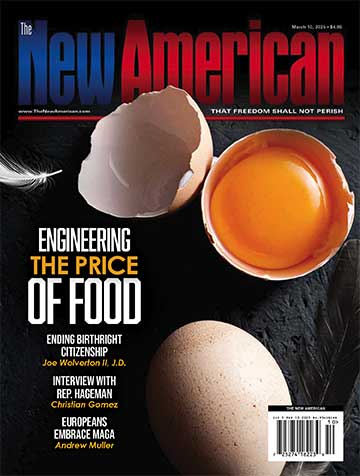
Kevin Hassett, chairman of President Trump’s Council of Economic Advisors, said on the Fox News program Countdown to the Closing Bell on Tuesday that “three and a half [percent annualized GDP growth in the third quarter] is looking like a pretty comfortable number right now,” but added, “I would hope it would come in above that.”
It certainly could, and it might even hit five percent GDP growth in the second half of the year. According to the Atlanta Federal Reserve’s forecast model, GDPNow, third-quarter growth is estimated to be 4.4 percent, with previous weekly forecasts ranging from 4.6 percent to 5.0 percent.
Even those could be too conservative. The latest report on U.S. manufacturing activity from the Institute of Supply Management (ISM) shows the overall economy growing for the 112th straight month, with the manufacturing sector hitting highs not seen in 14 years.
Every sector measured by the ISM in its Manufacturing Report on Business showed gains in August compared to July. Even Hassett fails to grasp the dynamics of the new Trump economy: Five percent growth is not only achievable but increasingly likely.
The August Purchasing Manager’s Index was 61.3 percent, an increase of 3.2 percent from July’s 58.1 percent; its New Orders Index was up 4.9 percent month over month; its Production Index was up 4.8 percent; its Employment Index increased by 2 percent; its Supplier Index gained 2.4 percent in August compared to July; and its Inventories Index jumped 2.1 percent in August.
The only index that declined month over month was its Prices Index, which fell by 1.1 percent, indicating raw materials prices declining slightly, month over month.
One executive in the transportation equipment sector said, “Generally high levels of demand continue, and [we are] planning for this elevated rate through the rest of the year.” Another, in the heavy machinery sector, told ISM, “Business is positive, new equipment sales and inquiries are strong, and the parts business is strong. Raw material costs, especially steel, appear to be leveling off. Cost of manufactured components has also leveled off.”
The only limit to growth is the number of skilled workers needed as the economy expands. This perhaps explains why forecasters have consistently under-predicted the economy’s performance. But that “skilled worker bottleneck” is being solved by those companies, with assistance from non-profit trade groups, local colleges, and private trade schools.
For example, Florida’s East Coast Chapter of Associated Builders and Contractors (ABC) matches workers moving to south Florida with companies seeking them, even if they aren’t skilled. Once an applicant is matched with a full-time job, the employer sends the candidate to the ABC Institute for classes and training. They usually run one or two nights a week for two to four hours each, attended by apprentices after they are done with their regular work day.
Those candidates work full-time from the start, and are paid for a 40-hour week. First-year electricians, for example, start at $15 an hour and enjoy $2-$3 hourly raises until they graduate at $25 an hour. If a graduate moves on to get his journeyman’s license, he gets another raise to $29 an hour, or about $4,000 a month.
This explains why south Florida is considered a “worker’s market”: An applicant without skills can move from zero to $15 an hour his first day on the job, and within a few years be making $25 to $30 an hour. In fact, in Miami, plumbers, electricians, brick masons, and carpenters earn far above the local median income: $55,000 to $75,000 a year, with full benefits and a pension, and without the need for a college degree.
In the last 14 months, Miami has added more than 6,300 constructions jobs thanks to this program and others similar to it.
Hassett made an oblique reference to the profits being repatriated from abroad that will only add additional fuel to the economy: “The big story of the second half [of 2018] is going to be all those factories [that were] built in the first half that are going to produce output, and that’s going to make output [GDP] go even higher.”
Photo: Clipart.com
An Ivy League graduate and former investment advisor, Bob is a regular contributor to The New American magazine and blogs frequently at LightFromTheRight.com, primarily on economics and politics. He can be reached at [email protected].
Related article:
Economy Booming: Could We See Trump’s Claimed 5% GDP Growth?




